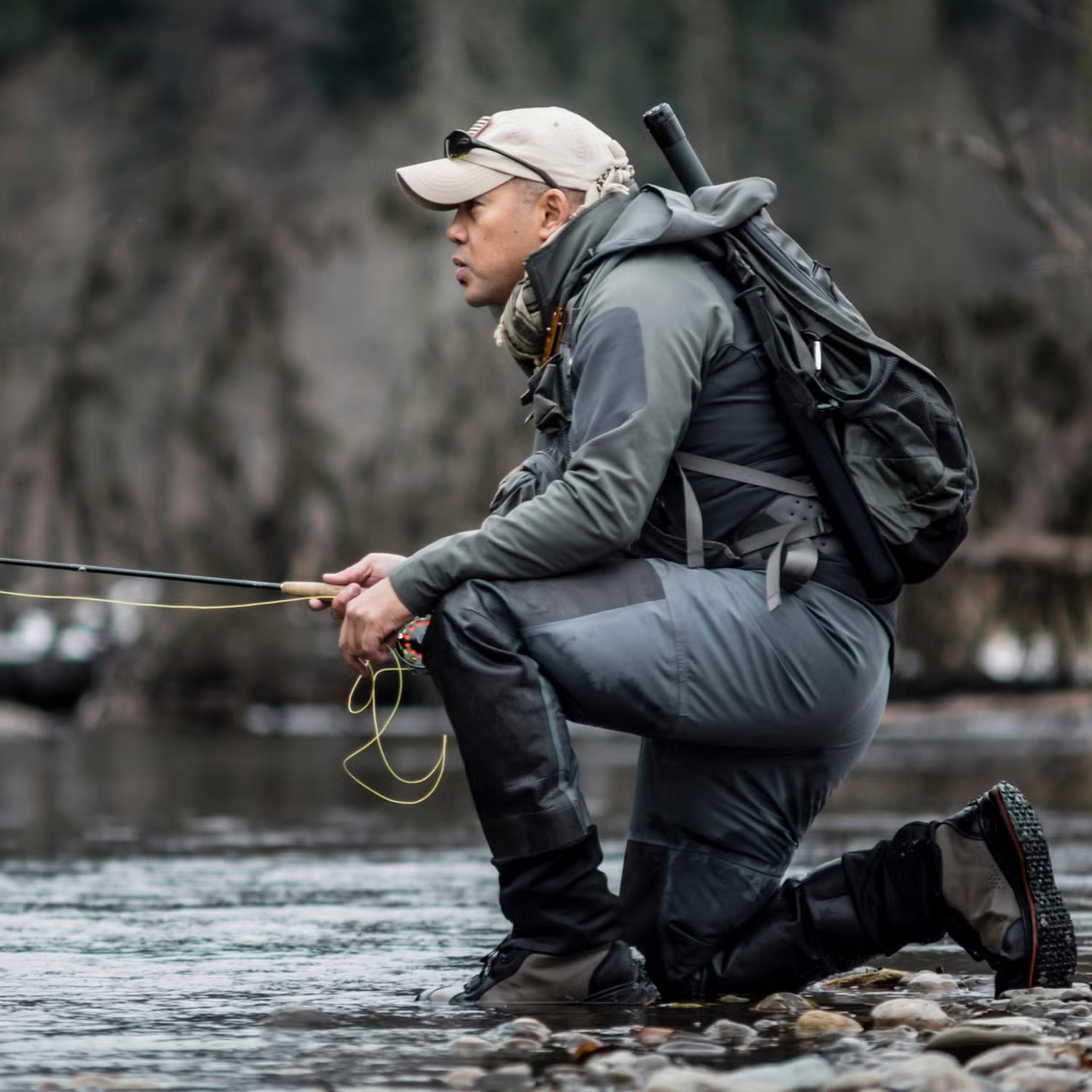Planning a Saltwater fly fishing adventure is thrilling, but your success depends largely on having the right gear. Saltwater environments are harsher, fish are stronger, and conditions change quickly, so the equipment you choose can make or break your experience. Whether you’re targeting bonefish on shallow flats, tarpon in tropical waters, or striped bass along the coast, the right gear setup will ensure you’re prepared for anything the ocean throws your way. In this guide, we’ll cover every essential item you need for a productive and enjoyable trip.
Choosing the Right Saltwater Fly Rod
The fly rod is the foundation of your setup, and for saltwater, it needs to be stronger, more durable, and corrosion-resistant.
Rod Weight and Length
Most saltwater anglers prefer rods in the 8–12 weight range, depending on target species. An 8-weight rod works well for bonefish and smaller species, while a 10–12 weight rod is ideal for tarpon or giant trevally. Rod length usually falls around 9 feet for optimal casting distance and line control in windy coastal conditions.
Material and Build Quality
Saltwater rods should be built from high-modulus graphite for strength without excessive weight. Look for models with anodized aluminum reel seats and oversized stripping guides to handle heavy saltwater lines.
Selecting the Best Saltwater Fly Reel
A high-quality fly reel is just as important as the rod in saltwater environments. The reel must withstand corrosion and deliver a smooth, strong drag system.
Drag System
A sealed drag system is essential to keep salt, sand, and grit from damaging internal components. Large arbor reels help with quicker line retrieval, crucial when a fast fish is running toward you.
Durability and Corrosion Resistance
Reels made from anodized aluminum or marine-grade stainless steel offer excellent protection against saltwater damage. Always rinse your reel thoroughly in fresh water after each trip.
The Importance of Saltwater Fly Lines
Saltwater fly lines are heavier, stiffer, and more resistant to UV and saltwater damage than freshwater lines.
Line Types
Floating lines work well for shallow flats fishing, while intermediate and sinking lines are better for deeper or faster-moving water. Shooting-head systems are popular for long-distance casts in windy conditions.
Backing and Leaders
Use 200–300 yards of Dacron or gel-spun backing to handle powerful runs. Leaders should be abrasion-resistant fluorocarbon, typically ranging from 9 to 12 feet, with a breaking strength suited to your target species.
Saltwater Flies That Get Results
Your fly selection should match local forage and conditions.
Popular Patterns
For bonefish, small shrimp and crab imitations are highly effective. Tarpon often prefer large baitfish patterns like the Black Death or Cockroach. Striped bass respond well to Clouser Minnows and Deceivers in various colors.
Tying and Storage
Using saltwater-grade hooks and materials will extend fly life. Store flies in waterproof boxes with rust-proof compartments to prevent corrosion.
Essential Clothing and Protection
Saltwater environments expose anglers to intense sun, wind, and spray, making protective gear a must.
Sun Protection
Wear a wide-brimmed hat, polarized sunglasses, and a lightweight, UPF-rated long-sleeve shirt. Buffs or neck gaiters protect your face and neck from UV rays.
Footwear
Non-marking deck shoes or flats boots provide traction on wet surfaces and protect feet from sharp shells or coral.
Wading Gear for Flats and Shore Fishing
If your saltwater fly fishing trip involves wading, specialized gear ensures safety and comfort.
Wading Boots
Choose lightweight boots with corrosion-resistant hardware and soles that provide grip on slippery rocks or sandy bottoms.
Wading Pants or Shorts
Quick-dry, breathable fabrics keep you comfortable in warm conditions, while waterproof options are better for cooler waters.
Storage and Transport Solutions
Keeping your gear organized and protected during travel is crucial.
Fly Rod Cases
Use hard-sided travel tubes for rods to prevent damage during transport.
Waterproof Bags
Dry bags and waterproof backpacks keep clothing, electronics, and tackle safe from saltwater spray.
Tools and Accessories for Efficiency
Small accessories can make a big difference in your saltwater fly fishing success.
Pliers and Cutters
Stainless steel or titanium pliers help remove hooks and cut heavy leader material without rusting.
Knot-Tying Tools
These tools help create secure knots quickly, especially in windy conditions or with heavy fluorocarbon.
Maintaining Your Saltwater Fly Fishing Gear
Saltwater is unforgiving, so maintenance is key to preserving your investment.
Cleaning After Each Trip
Rinse rods, reels, and lines thoroughly with fresh water. Wipe them dry with a clean cloth before storage.
Long-Term Storage
Keep gear in a cool, dry place. Loosen drag settings on reels and store flies in a well-ventilated area to prevent rust.
Pro Tips for a Successful Trip
- Practice casting in windy conditions before your trip.
- Learn local species’ habits and feeding patterns.
- Bring backup gear in case of breakage.
- Hire a local guide for insider knowledge and improved success rates.
Final Thoughts
A successful saltwater fly fishing adventure depends on preparation and the right gear. By selecting the best rod, reel, lines, flies, and protective equipment, you’ll be ready to handle the unique challenges of saltwater angling. Invest in quality gear, maintain it well, and respect the marine environment for a rewarding experience. The ocean is full of surprises—make sure you’re equipped to meet them head-on.




